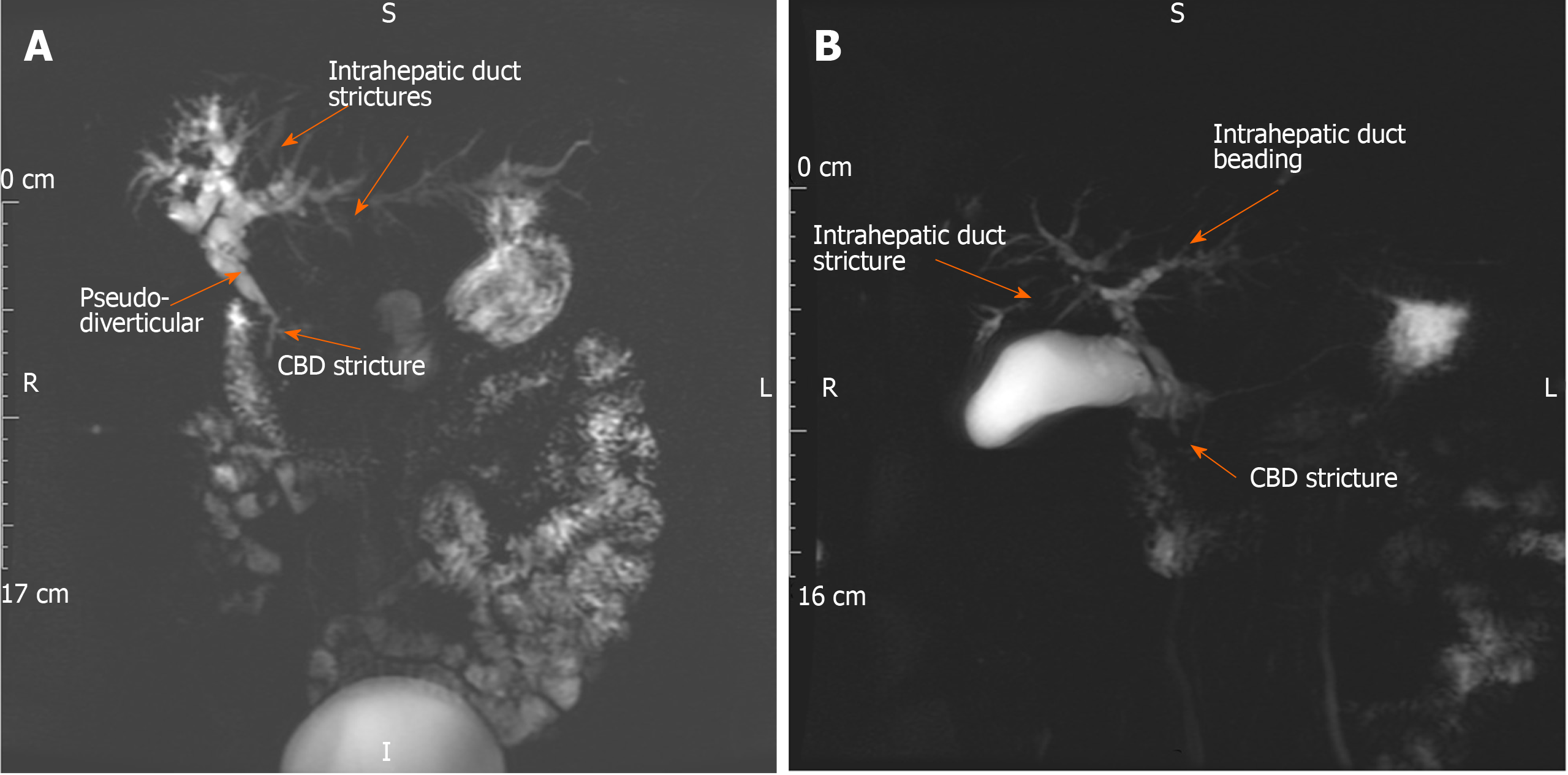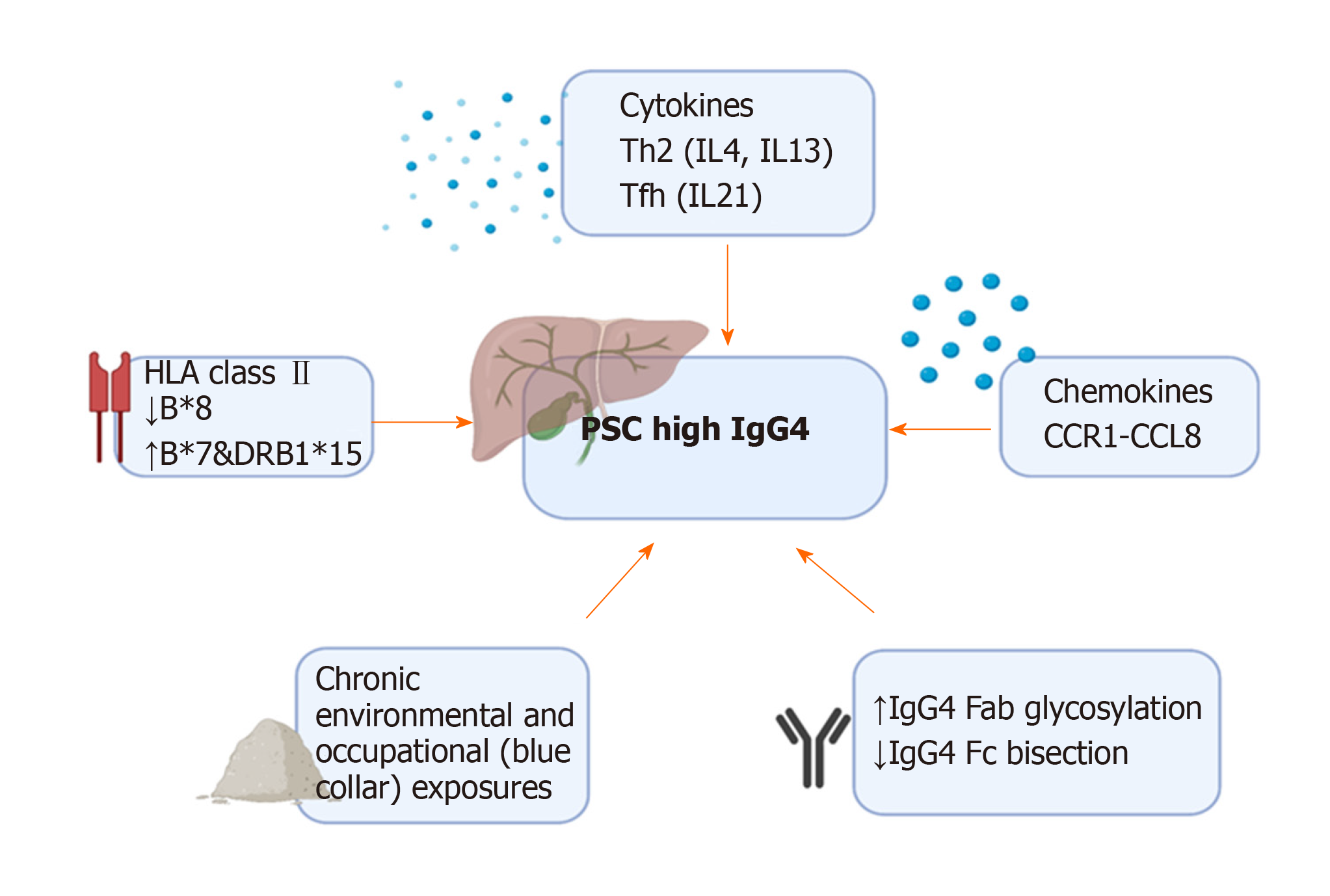Copyright
©The Author(s) 2020.
World J Gastroenterol. Jun 21, 2020; 26(23): 3126-3144
Published online Jun 21, 2020. doi: 10.3748/wjg.v26.i23.3126
Published online Jun 21, 2020. doi: 10.3748/wjg.v26.i23.3126
Figure 1 Decision tree for literature research strategy.
PSC: Primary sclerosing cholangitis.
Figure 2 IgG4-related sclerosing cholangitis type 2 (primary sclerosing cholangitis-like).
A 58-year old female with cholestatic liver biochemistry, elevated serum IgG4 and IgE, and peripheral blood eosinophilia. A: Magnetic resonance cholangiopancreatography (MRCP) demonstrates common bile duct stricture (CBD) (arrow), intrahepatic duct irregularity and strictures (arrows) and beading (arrows). The liver biochemistry, serum IgG4 level, common bile duct and intrahepatic duct strictures improved after 12 wk of corticosteroid therapy. Endoscopic retrograde cholangiopancreatography and brushings of the CBD stricture were negative for dysplasia. B: MRCP demonstrates new right intra-hepatic duct stricture (arrow) and improvement of CBD stricture (arrow) one year later. Azathioprine (1.5 mg/kg) started to reduce further risk of disease relapse. CBD: Common bile duct.
Figure 3 Pathogenic factors driving the phenotype of primary sclerosing cholangitis with an increased IgG4 level.
HLA: Human leukocyte antigen; PSC: Primary sclerosing cholangitis.
- Citation: Manganis CD, Chapman RW, Culver EL. Review of primary sclerosing cholangitis with increased IgG4 levels. World J Gastroenterol 2020; 26(23): 3126-3144
- URL: https://www.wjgnet.com/1007-9327/full/v26/i23/3126.htm
- DOI: https://dx.doi.org/10.3748/wjg.v26.i23.3126











